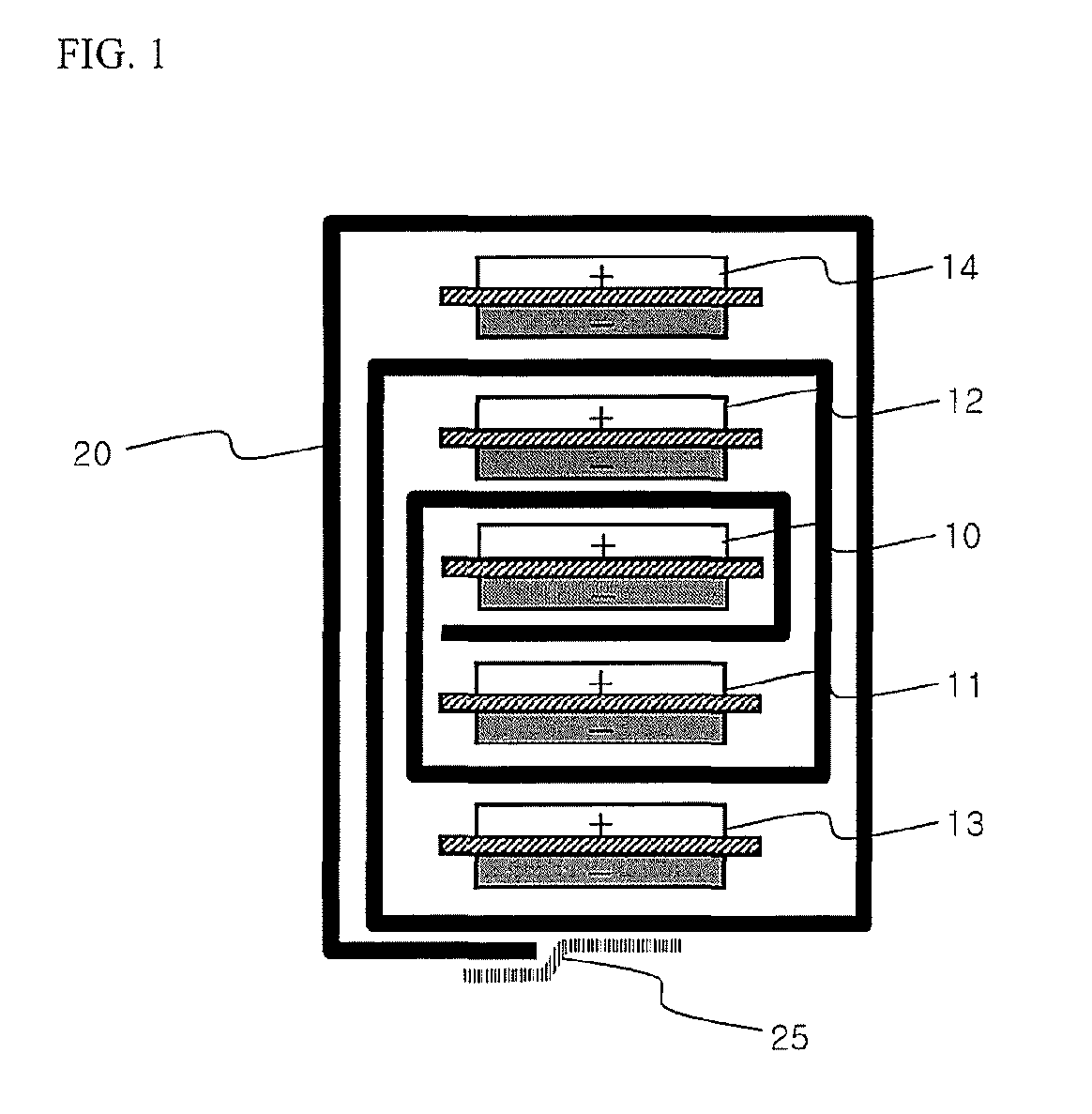Stack/folding-typed electrode assembly and method for preparation of the same
a technology of stacking type and electrode assembly, which is applied in the direction of cell components, sustainable manufacturing/processing, flat cell grouping, etc., can solve the problems of deteriorating battery performance, reducing productivity, and requiring a great deal of time and effort to perform sequential stacking process, so as to improve battery performance and simplify the manufacturing process. , the effect of improving the productivity of the battery
- Summary
- Abstract
- Description
- Claims
- Application Information
AI Technical Summary
Benefits of technology
Problems solved by technology
Method used
Image
Examples
first embodiment
[0074]First, FIG. 4 illustrates the structure of an electrode assembly according to the present invention in which an anode 200 is located at the middle of the electrode assembly, which is a winding start point 101. Full cells 202 and 204 above the anode 200 and full cells 201 and 203 below the anode 200 are arranged in a symmetrical structure.
second embodiment
[0075]Next, FIG. 5 illustrates the structure of an electrode assembly according to the present invention in which a cathode 300 is located at the middle of the electrode assembly, which is a winding start point 101. As in FIG. 4, full cells 302 and 304 above the cathode 300 and full cells 301 and 303 below the cathode 300 are arranged in a symmetrical structure. The bottommost cell 303 and the topmost cell 304, which form the outer surface of the electrode assembly, may be full cells (not shown) which are arranged in a symmetrical structure. Alternatively, the bottommost cell 303 and the topmost cell 304 may be formed of A-type bi-cells in which anodes occupy a large area to maximally restrain the dendritic growth at the anodes.
[0076]FIGS. 6 to 8 are typical views illustrating processes for manufacturing electrode assemblies using unit electrodes and full cells in accordance with various embodiments of the present invention, respectively.
[0077]Referring to these drawings, a separato...
PUM
| Property | Measurement | Unit |
|---|---|---|
| thickness | aaaaa | aaaaa |
| pore diameter | aaaaa | aaaaa |
| lengths | aaaaa | aaaaa |
Abstract
Description
Claims
Application Information
 Login to View More
Login to View More - R&D
- Intellectual Property
- Life Sciences
- Materials
- Tech Scout
- Unparalleled Data Quality
- Higher Quality Content
- 60% Fewer Hallucinations
Browse by: Latest US Patents, China's latest patents, Technical Efficacy Thesaurus, Application Domain, Technology Topic, Popular Technical Reports.
© 2025 PatSnap. All rights reserved.Legal|Privacy policy|Modern Slavery Act Transparency Statement|Sitemap|About US| Contact US: help@patsnap.com



